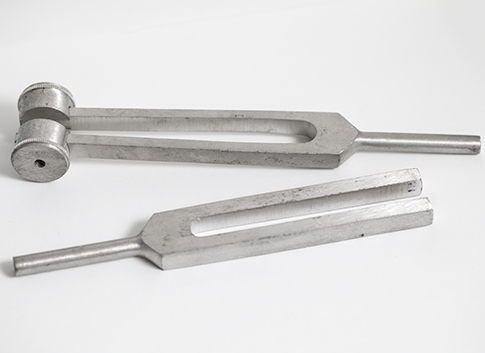Otosclerosis

Most cases of Otosclerosis are inherited in an autosomal dominant pattern with variable penetrance. In other words, you have a 50% chance of getting the gene from a parent with this gene; however, not everyone with the gene will develop symptoms.
The onset of hearing loss is typically occurs when patients are in their 20’s to 30’s. Tinnitus (ringing in the ears) is noted in roughly half of patients and dizziness is experienced in roughly a quarter of patients. About half of all patients will have family members with similar symptoms.
Otosclerosis is usually diagnosed in persons of Caucasian or Oriental descent and rarely in people of African-American descent. It affects women twice as often as men and is commonly discovered during or just after pregnancy.
The diagnosis of Otosclerosis is based upon personal history, family history, examination, hearing evaluation and exclusion of alternatives. Special hearing tests performed in a sound protected booth (an audiogram) can highly suggest otosclerosis is present. The diagnosis is typically secured at the time of surgical intervention if this is undertaken. Imaging with CT scan can be helpful to your surgeon in ruling out other disorders with similar symptoms and in surgical planning. Both Dr. Stevens and Dr. Whitaker will employ CT imaging when they deem it is indicated.
There are four treatment options for Otosclerosis.
Conservative approach
- Otosclerosis does not have to be treated. Yearly hearing testing is an option and may be used to monitor progression of hearing loss related to the disease and/or concomitant disorders (aging, noise exposure, etc).
Amplification
- Hearing aids are a potential option to manage hearing loss and in most cases
are highly effective for treating this condition. Hearing aids are typically not
well covered by insurance plans and require maintenance over time.
Surgical intervention
- Stapes surgery will restore hearing to a level equivalent to the non-affected
(healthy) ear 85-95% of the time when hearing loss is purely conductive.
Success rates are lower when hearing loss is both conductive and sensorineural (mixed hearing loss). Surgery will not improve sensorineural hearing loss; however, at times, surgery is offered to patients with mixed hearing loss in order to make them better hearing aid candidates. - This surgery is performed in an out-patient surgery center and involves replacing the stapes bone with a prosthesis. A laser is used in order to add surgical finesse and avoid mechanical traumatization of the inner ear. The surgery typically lasts between 45 minutes to an hour and a half.
- Following stapes surgery, Dr. Stevens and Dr. Whitaker will provide certain activity restrictions to maximize your chances for a successful result. Our AEI surgeons will tailor each case to the unique needs of the patients as no two cases are exactly alike.
Cochlear implantation
- Cochlear implants are considered for individuals with far advanced Otosclerosis involving a severe mixed hearing loss. Patients who cannot benefit from hearing aid amplification or stapes surgery, and who meet FDA criteria for cochlear implantation may be considered for this technology. Cochlear Implantation is known to be quite successful in restoring hearing for properly selected patients.
